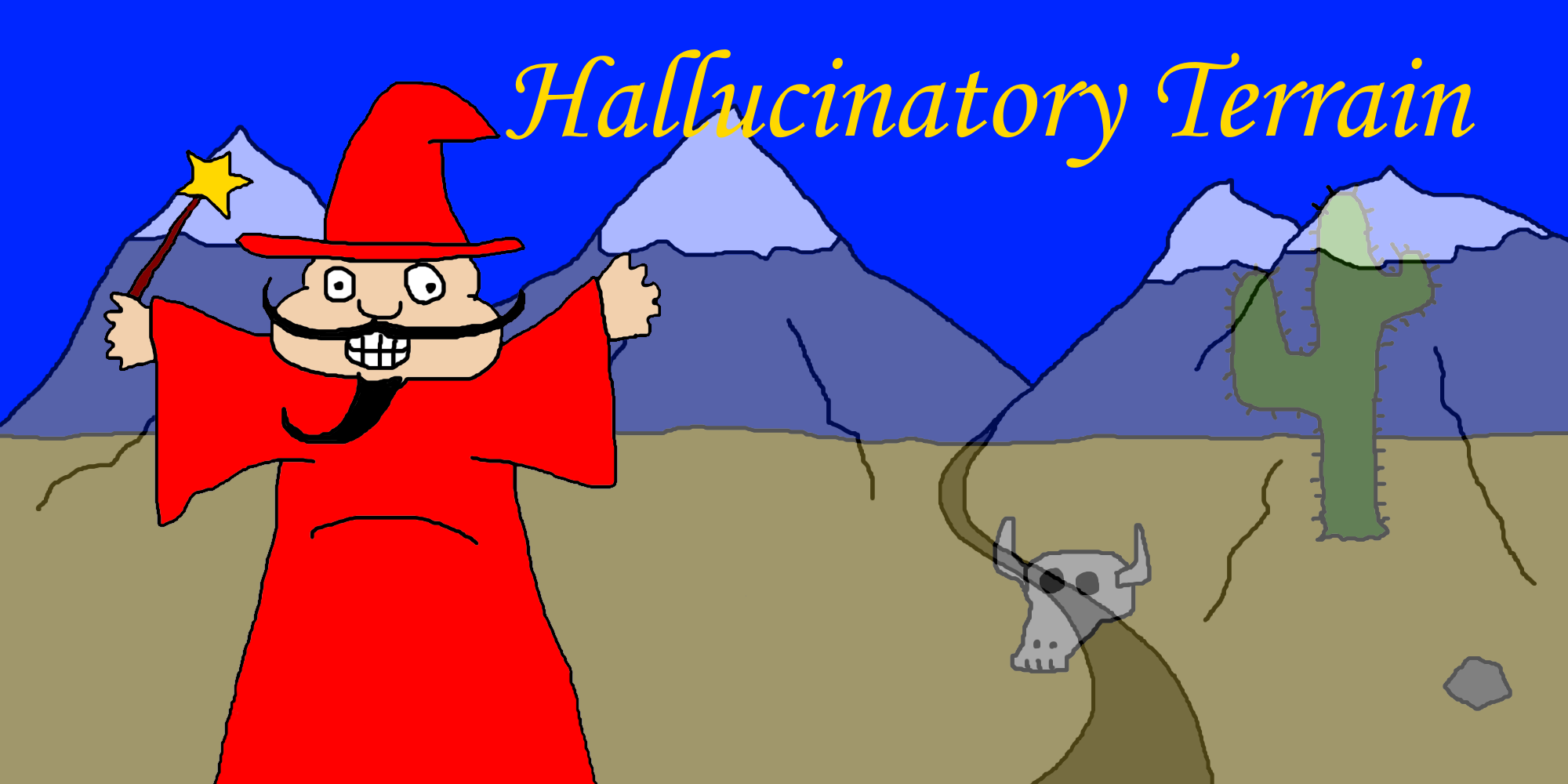Halluncinatory Terrain: Can’t See the Forest for the Sand
Usable By: Bard, Druid, Warlock, Wizard
Spell Level: 4
School: Illusion
Casting Time: 10 minutes
Range: 300 feet
Duration: 24 hours
Components: V, S, M (a stone, a twig, and a bit of green plant)
You make natural terrain in a 150-foot cube in range look, sound, and smell like some other sort of natural terrain. Thus, open fields or a road can be made to resemble a swamp, hill, crevasse, or some other difficult or impassable terrain. A pond can be made to seem like a grassy meadow, a precipice like a gentle slope, or a rock-strewn gully like a wide and smooth road. Manufactured structures, equipment, and creatures within the area aren’t changed in appearance.
The tactile characteristics of the terrain are unchanged, so creatures entering the area are likely to see through the illusion. If the difference isn’t obvious by touch, a creature carefully examining the illusion can attempt an Intelligence (Investigation) check against your spell save DC to disbelieve it. A creature who discerns the illusion for what it is, sees it as a vague image superimposed on the terrain.
Review by Sam West, Twitter:@CrierKobold
Illusions are normally exceptional spells in the hands of a creative player with a lot of ambition and a willingness to watch their plans blow up in their face. Little effects like Minor Illusion can have massive impacts on your daily adventure with some quick thinking and the clever placement of an illusory stolen object or a quick piece of concealment to hide behind. Hallucinatory Terrain should be a bigger version of that, it should be an up-cast mass area that deceives everyone around it. In practice, it's just a bit too clunky to see ready use, and doesn’t offer enough more than other big illusion spells to get cast over them.
Major Image is the easiest comparison to make for me, as it costs a spell slot, creates a fairly large effect, and can quickly be discerned as illusory. The core differences are in when you’re supposed to cast them, with Hallucinatory Terrain being something you need ten minutes to set up that will last the day, while Major Image is a spontaneous major effect to sway opinions now. The reality of Dungeons & Dragons play is that you’re going to want a lot of tools that interact with what’s happening now, tools to help you get out of unforeseen danger or navigate through uncertain escalations as complexities throw wrench after wrench into your plans. Hallucinatory Terrain, while it could be effective at selling a fantasy, at disguising an event or masking danger, just asks for too much prep. You need to know what illusion you’re trying to sell, know creatures won’t immediately interface with it to break the illusion, and have confidence the illusion will create an outcome you want, and all of that is more or less exclusive to affecting terrain, not imposing creatures or built structures into the space.
If Hallucinatory Terrain just took an action to cast I’d still be suspicious about it; for ten minutes, you’re just not going to regularly find places to cast it. Even the most dedicated illusionists will find this is the kind of spell their casting one in ten adventures if that, and likely will find other illusion effects can be as or more effective. You probably don’t need, nor want, Hallucinatory Terrain.
Thank you for visiting!
If you’d like to support this ongoing project, you can do so by buying my books, getting some sweet C&C merch, or joining my Patreon.
The text on this page is Open Game Content, and is licensed for public use under the terms of the Open Game License v1.0a.
‘d20 System’ and the ‘d20 System’ logo are trademarks of Wizards of the Coast, Inc.
and are used according to the terms of the d20 System License version 6.0.
A copy of this License can be found at www.wizards.com/d20.



